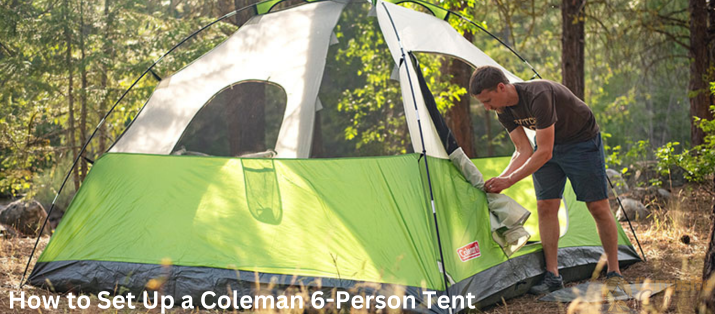Starting a camping trip can be an exciting adventure, offering an escape from the hustle and bustle of daily life. Whether you’re trekking through the wilderness or setting up camp in a serene campground, proper meal planning is essential to sustain your energy and enjoyment throughout your outdoor journey. However, when camping without access to a fridge, it’s important to select foods that are durable, non-perishable, and easy to store without refrigeration.
Camping without a fridge presents a unique set of challenges, but with careful planning and strategic packing, you can still enjoy delicious and nutritious meals while immersing yourself in nature. In this article, we’ll discuss a variety of food options that are perfect for camping adventures where refrigeration is not available. From hearty snacks to satisfying meals, you’ll discover a range of tasty and convenient choices to keep you fueled and satisfied during your outdoor activities.
So, let’s dive into the world of camping-friendly foods that require no refrigeration.

Benefits of camping without a fridge:
Camping without a fridge may seem difficult, but it offers several advantages that can enhance your outdoor experience. One of the primary benefits is the freedom it provides from modern conveniences. By forgoing the need for refrigeration, you’re able to travel lighter and more efficiently, as you won’t have to lug around bulky coolers or worry about keeping perishable foods cold.
Additionally, camping without a fridge encourages a greater connection to nature and self-sufficiency. When you rely on non-perishable foods and fresh ingredients that don’t require refrigeration, you’re forced to be more resourceful and creative with your meal planning and preparation.
Furthermore, camping without a fridge promotes healthier eating habits by encouraging you to consume more whole foods and minimize reliance on processed or pre-packaged items. With a focus on non-perishable staples like grains, beans, nuts, and dried fruits, you can fuel your body with nutrient-dense ingredients that provide sustained energy for your outdoor adventures. Overall, embracing the challenge of camping without refrigeration can lead to a more rewarding and fulfilling camping experience.
Factors to consider when choosing food for camping without a fridge:
When planning your meals for a camping trip without a fridge, it’s important to consider several key factors to ensure that you select the most suitable and practical foods. Here are some important considerations to keep in mind:
Shelf Stability:
Foods that have a long shelf life and can withstand exposure to varying temperatures without spoiling. Look for items that are specifically labeled as non-perishable or shelf-stable, such as canned goods, dried fruits, nuts, and dehydrated meals.
Packaging:
Choose foods that are packaged in durable and lightweight containers that are easy to transport and store in your camping gear. Avoid bulky packaging that may be prone to damage during travel or take up overly space in your backpack.
Nutritional Value:
Prioritize foods that are nutritious and provide essential vitamins, minerals, and macronutrients to fuel your outdoor activities. Focus on whole foods such as grains, legumes, seeds, and nuts, which offer a balanced combination of carbohydrates, protein, and healthy fats.
Flexibility:
Select foods that are flexibility and can be used in a variety of meal preparations. Ingredients like rice, pasta, canned beans, and spices can be combined in numerous ways to create flavorful and satisfying meals without the need for refrigeration.
Portability:
Consider the weight and size of each food item to ensure that it’s practical to carry during hiking or backpacking excursions. Choose lightweight and compact options that won’t weigh you down or take up excessive space in your pack.
By taking these factors, you can strategically plan your camping menu to include a variety of delicious and nutritious foods that require no refrigeration, allowing you to enjoy your outdoor adventure to the fullest.
Essential non-perishable food items for camping without a fridge:
When it comes to camping without a fridge, having a selection of non-perishable foods on hand is key to ensuring you have delicious and satisfying meals throughout your outdoor adventure. Here are some important non-perishable food items to consider packing for your next camping trip:
Canned Foods:
Canned goods are a flexible and convenient option for camping meals. Consider bringing along canned tuna, beans, and soup, which can be easily incorporated into a variety of dishes like salads, stews, and sandwiches.
Dried Fruits and Nuts:
Dried fruits and nuts are lightweight, nutrient-dense snacks that provide a quick energy boost while hiking or exploring. Pack a mix of your favorite dried fruits such as raisins, apricots, and cranberries, along with an assortment of nuts like almonds, walnuts, and cashews.
Jerky and Other Dried Meats:
Jerky and other dried meats are excellent sources of protein and can be enjoyed as standalone snacks or added to meals for extra flavor and sustenance. Look for varieties such as beef, turkey, or salmon jerky to keep you fueled during your outdoor adventures.
Energy Bars and Granola Bars:
Energy bars and granola bars are convenient grab-and-go options for quick snacks or breakfasts on the go. Choose bars that are high in protein and fiber to keep you feeling full and satisfied between meals.
Instant Oatmeal Packets:
Instant oatmeal packets are a hearty and filling breakfast option that requires minimal preparation. Simply add hot water, and you’ll have a warm and comforting meal to start your day off right.
Peanut Butter and Jelly Sandwiches:
Peanut butter and jelly sandwiches are classic camping fare that never disappoints. Packed with protein and carbohydrates, they make for a satisfying lunch or snack option that can be enjoyed on the trail or around the campfire.
By picking up on these important non-perishable food items, you can ensure that you have a variety of tasty and nutritious options to enjoy during your camping trip, without the need for refrigeration.
Fresh Produce Selection For Camping Without Fridge:
When camping without a fridge, selecting the right fresh produce can make a difference in your meal options and overall enjoyment of the outdoors. Here are some tips for choosing the best fresh produce items for your camping adventure:
Durable Fruits and Veggies:
Fruits and vegetables that are sturdy and have a longer shelf life, such as apples, oranges, carrots, and bell peppers. These items can withstand being transported in a backpack and stored without refrigeration for several days, making them ideal choices for camping trips.
Root Vegetables Ideas:
Root vegetables like potatoes, sweet potatoes, and onions are excellent options for camping without a fridge. They are durable, versatile, and can be used in a variety of recipes, from roasted potatoes to hearty stews. Plus, they provide essential carbohydrates and nutrients to keep you energized during your outdoor activities.
Citrus Fruits Benefits:
Citrus fruits like lemons, limes, and oranges offer numerous benefits for camping trips. Not only are they packed with vitamin C to support your immune system, but they also add refreshing flavor to your meals and beverages. Use citrus fruits to enhance marinades, flavor water, or add zest to salads and desserts.
Avocado and Tomatoes:
While avocados and tomatoes are typically considered perishable, they can still be enjoyed on camping trips if they are selected and stored carefully. Choose firm, unripe avocados and tomatoes that are not overly ripe to ensure they stay fresh longer. These ingredients can be used to make guacamole, sandwiches, salads, and more, adding a delicious and nutritious touch to your camping meals.
By incorporating these fresh produce items into your camping menu, you can enjoy a variety of flavorful and nutritious meals while immersing yourself in the great outdoors. Just remember to pack them securely and consume them early in your trip to prevent spoilage.
Proteins item for camping Without Refrigerator:
Ensuring an adequate protein intake is important for maintaining energy levels and muscle function during camping trips without a fridge. Here are some protein options that require no refrigeration and are perfect for your outdoor adventures:
Jerky and Smoked Meats:
Jerky and smoked meats are excellent protein sources that are shelf-stable and convenient for camping. Whether it’s beef, turkey, or salmon jerky, these tasty snacks provide a satisfying protein boost while hiking or lounging around the campfire.
Plant-Based Proteins:
For those following a vegetarian or vegan diet, there are plenty of plant-based protein options that don’t require refrigeration. Pack items like canned beans, lentils, chickpeas, and tofu, which are rich in protein and can be incorporated into a variety of meals, from salads to stir-fries.
Ready-to-Eat Tuna:
Ready-to-eat tuna pouches are a convenient and portable protein option for camping trips. These single-serve pouches require no refrigeration and can be enjoyed on their own or mixed into salads, wraps, or pasta dishes for a quick and easy meal.
Hard Cheeses:
While most cheeses require refrigeration, hard cheeses like cheddar, Parmesan, and Gouda are exceptions. These cheeses have a lower moisture content, making them more resistant to spoilage at room temperature. Simply wrap them tightly in wax paper or parchment paper to keep them fresh during your camping trip.
By including these protein-rich options in your camping meal plan, you can ensure that you have the fuel you need to power through your outdoor adventures, without the need for refrigeration. Whether you prefer meat-based or plant-based proteins, there are plenty of delicious and convenient options to choose from.
Tips for storing and preparing food on a camping trip without a fridge:
When camping without a fridge, proper storage and preparation techniques are essential for keeping your food safe, fresh, and delicious throughout your outdoor adventure. Here are some tips to help you make the most of your camping culinary experience:
Use Insulated Coolers:
While you may not have a traditional fridge, insulated coolers can help keep perishable items cool for a limited time. Consider using a high-quality cooler with thick insulation and ice packs to store items like fresh produce, dairy products, and meats. Pack the cooler strategically, placing perishable items at the bottom and covering them with ice packs to maintain a consistent temperature.
Choose Shelf-Stable Foods:
Focus on selecting non-perishable foods that are durable and resistant to spoilage at room temperature. For canned goods, dried fruits and nuts, jerky, and other shelf-stable items that don’t require refrigeration. These foods can be safely stored in your backpack or camping gear without the risk of spoiling.
Minimize Exposure to Heat:
To prevent food from spoiling prematurely, store your camping supplies in a cool, shaded area away from direct sunlight. Avoid leaving food items in hot vehicles or exposed to high temperatures for extended periods, as this can quicken spoilage and bacterial growth.
Practice Proper Food Handling:
Maintain good hygiene practices when handling and preparing food outdoors. Wash your hands thoroughly with soap and water before and after handling food, and use clean utensils and cutting boards to prevent cross-contamination. Keep raw meats separate from ready-to-eat foods to reduce the risk of foodborne illness.
Plan Meals Wisely:
Plan your camping meals in advance and prepare as much as possible before you leave home. Pre-cut vegetables, marinate meats, and portion out ingredients to streamline the cooking process at the campsite. Consider cooking meals over a campfire or portable stove for a rustic and enjoyable dining experience.
By following these tips for storing and preparing food on a camping trip without a fridge, you can enjoy delicious and satisfying meals while immersing yourself in the beauty of the great outdoors. With careful planning and preparation, you can create memorable camping culinary experiences that nourish both body and soul.
Creative ways to keep perishable items cold without a fridge:
Keeping perishable items cold during a camping trip without a fridge requires ingenuity and resourcefulness. Here are some creative ways to maintain cooler temperatures for your food using ice packs, cooler bags, and other innovative techniques:
Use Reusable Ice Packs:
Invest in reusable ice packs or gel packs designed specifically for camping and outdoor activities. These packs can be frozen ahead of time and used to keep your cooler contents cold without the need for traditional ice cubes. They are durable, mess-free, and can be reused multiple times throughout your trip.
Freeze Water Bottles:
Freeze several large water bottles or jugs before your camping trip and use them as makeshift ice packs in your cooler. Not only will they help keep your food cold, but they will also provide a refreshing source of hydration as they gradually thaw.
Layer Insulation:
Maximize the insulation in your cooler by layering items strategically. Start by placing a layer of ice packs or frozen water bottles at the bottom of the cooler, followed by a layer of perishable items wrapped in insulation such as towels or blankets. Repeat this process until the cooler is filled, ensuring that perishable items are kept as cold as possible.
Utilize Cooler Bags:
Pack perishable items in insulated cooler bags or soft-sided coolers for additional insulation and protection from heat. These bags are lightweight, portable, and can help maintain cooler temperatures for longer periods, especially when combined with ice packs or frozen water bottles.
Limit Opening the Cooler:
Minimize the frequency of opening and closing your cooler to prevent warm air from entering and cold air from escaping. Plan ahead and organize your cooler contents strategically so that you can access items efficiently without extented exposure to warmer temperatures.
Utilize Natural Cooling Methods:
Take advantage of natural cooling methods such as burying your cooler in the shade or submerging it in a cold stream or lake (if safe to do so). These natural cooling techniques can help extend the lifespan of your ice packs and keep perishable items colder for longer periods.
By implementing these creative strategies, you can effectively keep perishable items cold without a fridge during your camping adventures. With careful planning and preparation, you can enjoy fresh and delicious meals even in the great outdoors.
Conclusion:
Camping without a fridge can seem difficult when it comes to meal planning. However, with some simple tips and ideas, you can still enjoy delicious and nutritious meals while enjoying the great outdoors. From non-perishable items like canned goods and dry snacks to utilizing coolers and ice packs, there are plenty of options for food that will keep well on your next camping trip. Just remember to plan ahead, pack smartly, and have fun experimenting with different meal ideas.
FAQS:
How can food be kept fresh without a refrigerator?
Choosing the right food cooler is the first step in keeping food fresh without a refrigerator. Invest in a high-quality, well-insulated cooler. In order to keep warm and cold air from escaping, look for models with sturdy walls and a reliable sealing mechanism.
What kind of meat does not need refrigeration?
Bring meat that doesn’t require refrigeration as a solution. Certain meat items that are preserved in cans do well in cool, dry environments. Protein replacements that work include canned chicken, chicken packets, sausage links, precooked bacon, beef jerky, and canned ham.
What sandwich fillings don’t need to be refrigerated?
Certain fillings, such jam, nut butters, pepperoni, salami, and hard cheeses, can be refrigerated for four to six hours before being used as a filler for sandwiches, pittas, or wraps. If you like tuna, you may spread some on a sandwich at work with a little can and an opener.






